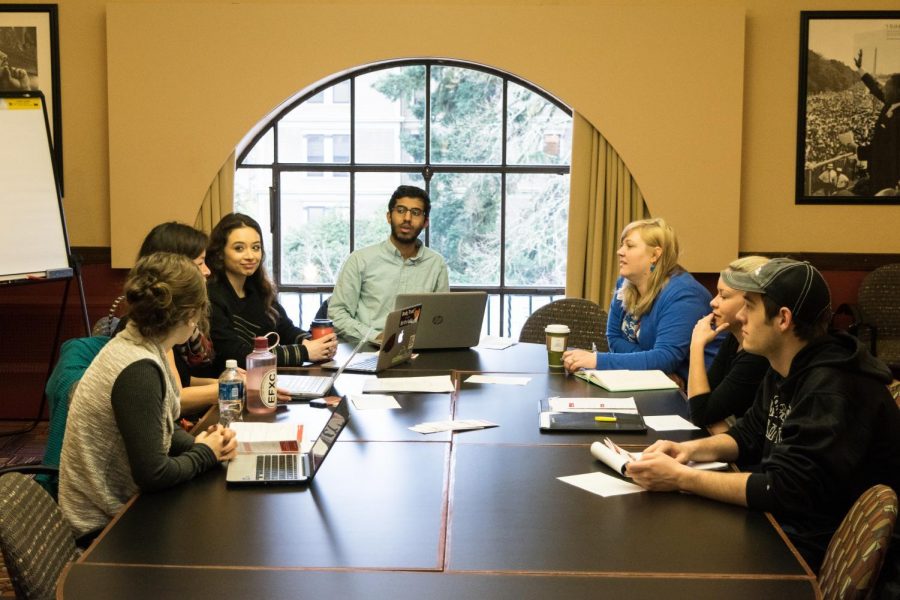Health on a budget
April 3, 2017
Student Health Advisory Board promotes health at OSU, reviews SHS funding
Oregon State University students not only have a say in who represents them on campus, but also where their student fees are allocated.
The Student Health Advisory Board helps to represent the student body and make budget decisions at Student Health Services.
The board currently consists of 13 undergraduate students and four voting faculty. One of the non-voting faculty is Jenny Haubenreiser, who is the executive director of SHS and has been a part of SHAB for three years. Haubenreiser sees the value in having the students’ perspectives on SHS budget issues.
“I look to them as the face of student health,” Haubenreiser said.
The SHAB is the first group to review the SHS budget. After they approve it, the budget is reviewed by the Student Incidental Fees Committee. From the SIFC, the budget is sent to ASOSU.
According to Haubenreiser, the budget-setting process is the heaviest lifting that the SHAB does, but they also look for ways to promote the health of the community. She said that they make decisions about whatever comes up, which can consist of policy or operational decisions.
Faculty positions in the SHAB are appointed by the Vice President of Student Affairs, but any student can submit an application to become a member of the SHAB. According to Haubenreiser, the hands-on work that the SHAB undergraduate students get can lead to their development as leaders.
Rishi Seshadri is a student at OSU who joined SHAB in the fall of 2015 as someone who was interested in health care and was looking for ways to get involved. This year he took the chair position at SHAB and has gained leadership experience. From his two years at the SHAB he has gained an understanding of the mission of the SHAB.
“Orienting (SHS) that it best meets the needs of students on this campus, making sure that we have a student voice to convey what those needs are to (SHS),” that is the mission of the SHAB, Seshadri said.
In addition to making decisions about budgets and insurance issues, student members of the SHAB learn about health care and get real-world experience, according to Seshadri.
“It’s not something that is taught in a classroom,” Seshadri said. “This is the first chance I had to see what a decision-making, deliberative body looks like.”
According to Seshadri, undergraduate student members of the SHAB learn about programs within SHS including fees, insurance and preventative and individualized care. He said that SHAB meets for an hour at 8 a.m. on Tuesdays in the Memorial Union and is ultimately about “building a culture of wellness.”
Kenneth Maes is an assistant professor in the anthropology department and has been a part of SHAB for over two years as a voting faculty member. He started on the SHAB because it was a way for him to learn how the university works and interact with students.
He said that a big part of the SHAB is “getting students on SHAB to really be critical about what services we offer here on campus and how they can be better and how things like mental health aren’t getting enough funding and attention.”
The role of the SHAB is not only budget setting, according to Maes.
“(SHAB) communicates to students what (health) services exist and why they should make more use of them.”
Informing the student body is an important task of the SHAB, according to Maes.
“We want to recruit more students to SHAB, and we want to recruit active students,” Maes said.
SHAB recruits new members in the spring who will begin in the fall. Applications can be found online at the SHAB webpage.
























































































































